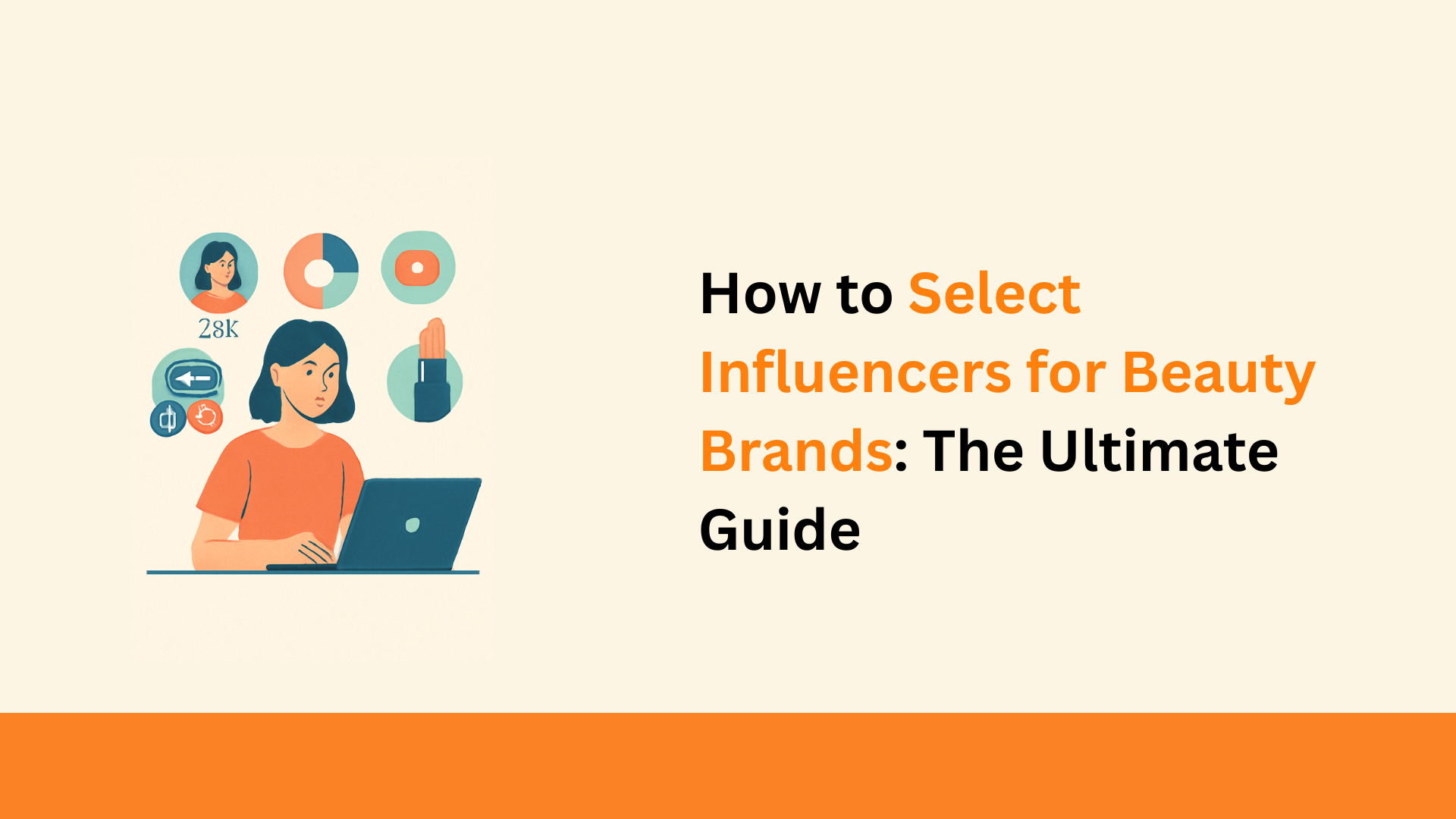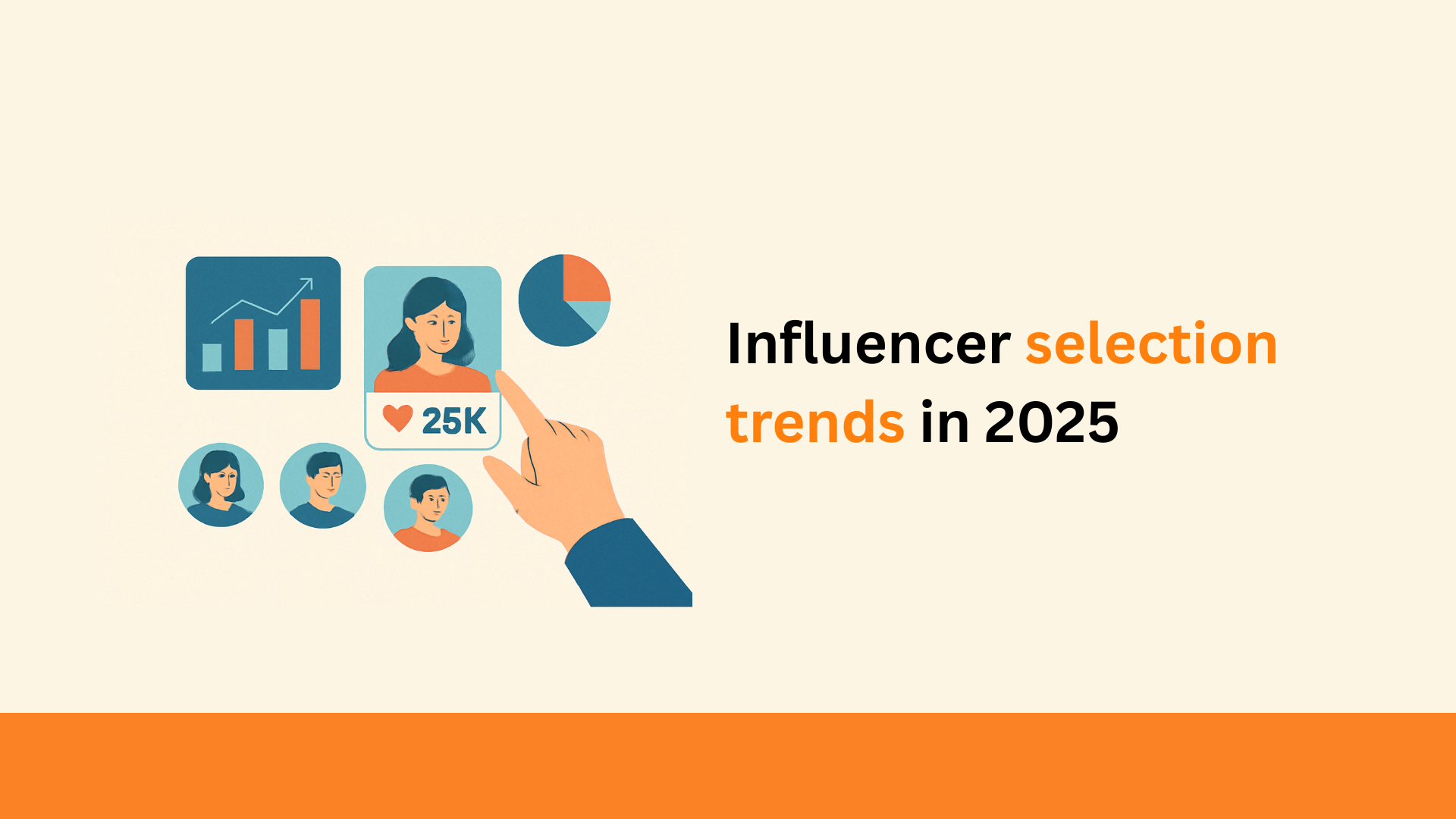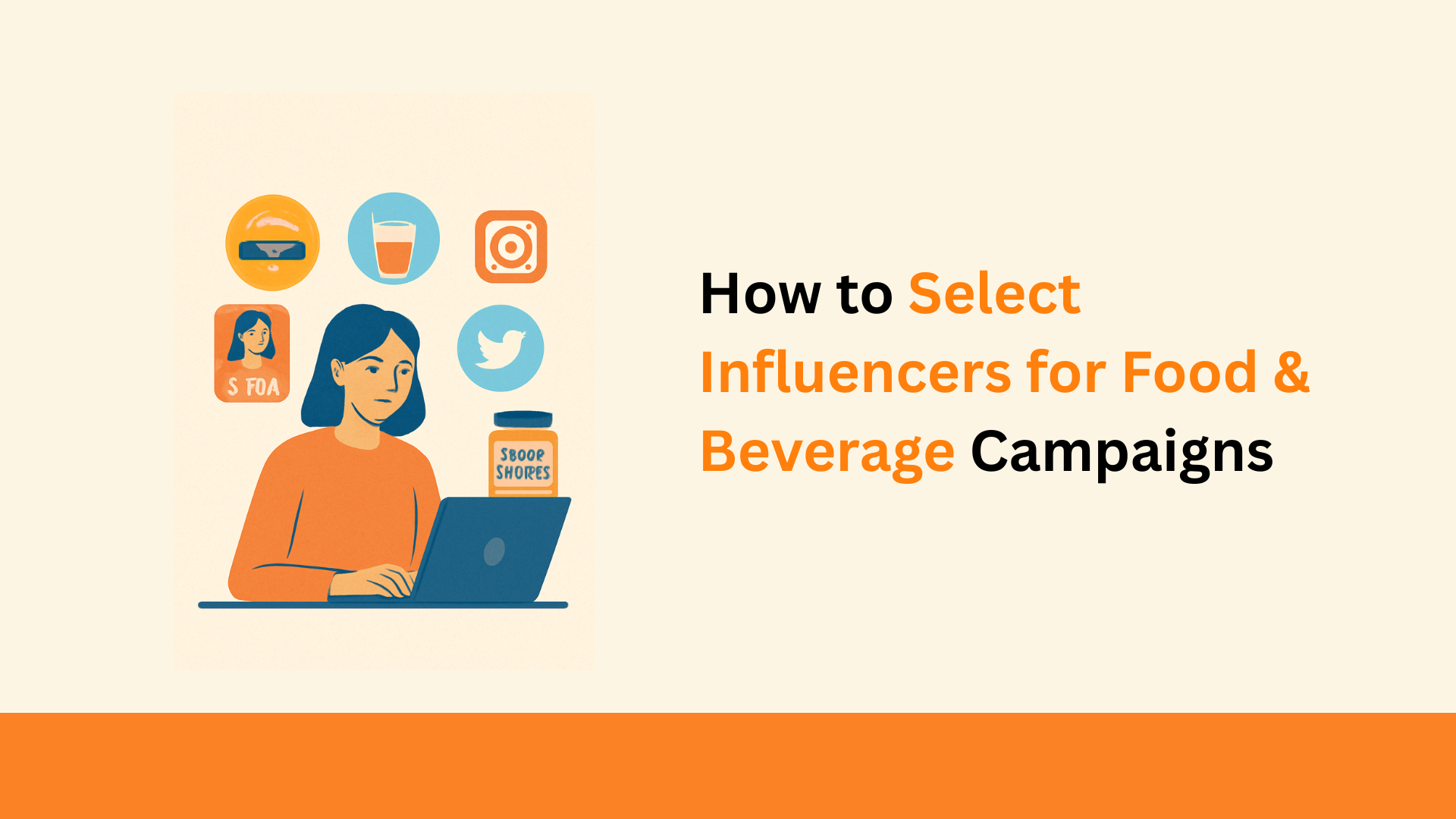TLDR
- Beauty brand success with influencers hinges on finding creators whose skin type, values, and aesthetics align authentically with product positioning
- Different product categories require specialized creator types—dermatologists for clinical skincare, makeup artists for color cosmetics, and minimalist content creators for clean beauty
- Metrics beyond follower count matter most: save rates, tutorial completion, genuine skincare concerns in comments, and before/after engagement patterns
- Regional and skin tone diversity is essential in India’s varied beauty market
- Using influencer marketing tools in combination with manual vetting delivers the most effective beauty partnerships
What Makes a Great Beauty Influencer?
The beauty industry in India reached ₹80,000 crore in 2023 with 15-18% annual growth, making it one of the most competitive spaces for influencer marketing. But unlike other sectors, beauty brands face unique challenges when selecting creator partners.
A truly effective beauty influencer demonstrates three core qualities:
Authentic Skin Journey Documentation
The most credible beauty creators share their genuine skincare journeys, including:
- Unfiltered before/after content showing real product results
- Transparent disclosure of treatment timelines (not claiming overnight miracles)
- Consistent skin concerns over time, rather than constantly changing issues
- Video demonstrations showing actual product application and texture
Technical Category Knowledge
Effective beauty influencers showcase specific expertise relevant to their niche:
- Skincare specialists who understand ingredients and interactions
- Makeup artists who demonstrate proper application techniques
- Haircare creators who explain product chemistry and styling methods
- Fragrance reviewers who can articulate scent notes and longevity
Visual Storytelling Excellence
Beauty is inherently visual, requiring creator partners who excel at:
- High-quality demonstration videos with proper lighting
- Macro shots highlighting product texture and application
- Comparison content showing differences between similar products
- Seamless transitions showing transformation processes
The most successful influencer selection strategies prioritize these qualities above basic metrics like follower count or general aesthetic appeal.
Key factors to consider while evaluating Influencer-Brand fit
Finding the perfect creator match requires evaluating multiple alignment factors:
Product-Creator Alignment
- Skin type compatibility: Oily skin influencers for mattifying products, dry skin creators for hydrating formulations
- Aesthetic consistency: Minimalist creators for clean beauty, high-glam influencers for bold makeup
- Values resonance: Sustainability-focused creators for eco-friendly brands, science-backed voices for clinical skincare
Audience-Target Market Match
- Demographic overlap: Age ranges, income brackets, and geographic distribution
- Skincare concerns: Common issues mentioned in comments (acne, aging, hyperpigmentation)
- Purchase behavior: Luxury vs. mass-market preferences expressed by followers
According to a 2023 survey by Nielsen, 72% of Indian beauty consumers research products through influencers who share their specific skin concerns before making purchase decisions.
Competitive Landscape Positioning
- Brand history: Previous partnerships with direct competitors (and how recent)
- Positioning consistency: Alignment between influencer’s typical product recommendations and your brand positioning
- Exclusivity potential: Willingness to form longer-term exclusive partnerships
To effectively find influencer partners who meet these criteria, combining automated discovery with manual verification delivers the best results.
“We specifically look for creators who have consistently mentioned the skin concerns our products address—even before any partnership discussions,” notes Ghazal Alagh, Co-founder of Mamaearth. “This authenticity signal is the strongest predictor of campaign success in our influencer marketing efforts.”
Product-Specific Selection Framework
Different beauty products require specifically tailored creator partnerships:
| Product Category | Ideal Creator Type | Key Selection Criteria | Red Flags |
| Clinical Skincare (Retinol, AHA/BHA) | Dermatologists, Skinfluencers with a science background | Evidence-based content history, educational style, and results documentation | Excessive filters, unrealistic claims, and inconsistent skin concerns |
| Everyday Skincare (Cleansers, Moisturizers) | Relatable lifestyle creators, skincare enthusiasts | Consistent routine sharing, skin type transparency, and genuine product integration | Overly sponsored feeds, contradictory recommendations, filter dependency |
| Color Cosmetics (Foundation, Lipstick) | Makeup artists, beauty transformers | Application expertise, diverse skin tone swatches, wear tests | Low completion rates on tutorials, poor lighting quality, and limited shade demonstrations |
| Clean/Natural Beauty | Ingredient-conscious creators, wellness influencers | Value alignment, educational content about ingredients, minimalist aesthetic | Partnerships with conflicting conventional brands, limited ingredient knowledge |
| Haircare | Hair specialists, texture-specific experts | Hair type specificity, styling technique mastery, before/after documentation | Generic recommendations across all hair types, lack of technique demonstration |
| Luxury Beauty | Elevated lifestyle creators, premium beauty specialists | High production quality, sophisticated aesthetic, luxury consumer audience | Mass-market product dominance, inconsistent quality, disconnected audience demographics |
A targeted influencer marketing strategy recognizes these distinctions and builds category-specific selection frameworks. For instance, a brand launching both everyday moisturizers and clinical treatments would develop separate influencer rosters for each product line rather than using the same creators across all products.
According to the Beauty & Personal Care India Report, 62% of successful beauty campaigns now use category-specialized creators rather than general beauty influencers.
Metrics That Matter for Beauty Campaigns
While traditional influence metrics remain relevant, beauty brands should prioritize these specialized indicators:
Engagement Quality Indicators
- Save rate: Particularly important for tutorial content and routine recommendations
- Tutorial completion rate: Percentage of viewers watching demonstration videos to completion
- Comment quality: Specific questions about products rather than generic compliments
- Before/after engagement: Higher engagement on transformation content versus lifestyle posts
Audience Resonance Signals
- Skin concern mentions: Frequency of specific issues mentioned in comments (e.g., “hyperpigmentation,” “acne scars”)
- Purchase intent language: Comments indicating a desire to purchase products featured
- Question consistency: Similar questions appearing repeatedly, indicating the audience needs
Content Effectiveness Markers
- Swatch engagement ratio: Engagement on shade/texture demonstration posts compared to other content
- Technique adoption: Followers attempting recommended techniques in their own content
- Product investigation: Comments seeking specific formulation details
These nuanced engagement rate metrics provide deeper insight than raw numbers alone. An influencer marketing agency specializing in beauty can help develop custom evaluation frameworks based on these indicators.
Regional and Demographic Considerations for Indian Beauty Brands
India’s diverse beauty market requires special consideration of regional factors:
Skin Tone Representation
- Diverse shade creators: Influencers representing South Asian skin tone diversity (especially important for complexion products)
- Regional skin concern specialists: Creators addressing issues prevalent in specific Indian regions
- Seasonal variation experts: Influencers demonstrating product effectiveness across India’s varied climatic conditions
Linguistic and Cultural Relevance
- Regional language specialists: Beauty creators producing content in Tamil, Telugu, Bengali, and other languages beyond Hindi/English
- Cultural context experts: Influencers connecting traditional beauty practices with modern products
- Festival and occasion specialists: Creators demonstrating looks for specific cultural events
A study by INCA India found that beauty campaigns using regional language creators and context-specific content delivered 37% higher engagement than generic national campaigns.
Using Qoruz to Streamline Creator Vetting
Even the most experienced beauty marketing teams benefit from specialized tools to enhance their influencer discovery and vetting:
Data-Driven Discovery
An influencer marketing platform like Qoruz allows beauty brands to:
- Filter creators by specific skin concerns mentioned in their content
- Identify specialists in particular beauty categories (skincare, makeup, haircare)
- Analyze audience demographic alignment with target markets
- Detect potential fake follower issues before investing in partnerships
Automated Authenticity Verification
Advanced influencer marketing software provides critical verification features:
- Content sentiment analysis reveals genuine product opinions
- Engagement pattern evaluation identifying suspicious activity
- Audience quality assessment confirming follower authenticity
- Historical partnership tracking showing competitive brand relationships
“Qoruz’s platform helped us identify nano-influencers with specific skin concerns matching our target audience, resulting in 3.8x higher conversion rates compared to working with general beauty creators,” shares Sanjeev Jasani, COO of Cheil India..
FAQs
- How do I choose an influencer for a beauty product?
Select creators whose skin type, concerns, and aesthetic align with your product positioning. Verify they’ve discussed similar concerns organically, check their content quality for proper demonstration capability, and analyze their audience demographics for target market alignment.
- What should I look for in a skincare influencer?
Prioritize creators who share unfiltered skin content, demonstrate consistent concerns over time, exhibit ingredient knowledge, and have an audience actively discussing similar skincare issues. Their before/after content should show realistic timelines and results.
- How can fake influencers in the beauty space be avoided?
Watch for excessive filter usage that masks true results, check for suspicious engagement patterns like generic comments, verify audience quality through demographic analysis, and confirm their skincare journey shows consistent concerns rather than constantly changing issues.
- Should beauty brands work with nano or celebrity creators?
This depends on campaign objectives. Nano-influencers typically deliver higher engagement and conversion rates for specific skin concerns and niche products. Celebrities provide broader awareness but lower trust for clinical effectiveness claims. Many successful brands use a tiered approach combining both.
- Which tools can help beauty brands select the right influencers?
Specialized platforms like Qoruz offer beauty-specific filters to identify creators by skin concern, content type, and audience demographics. These tools streamline discovery, verify authenticity through engagement analysis, and track competitive partnerships to ensure brand alignment.



